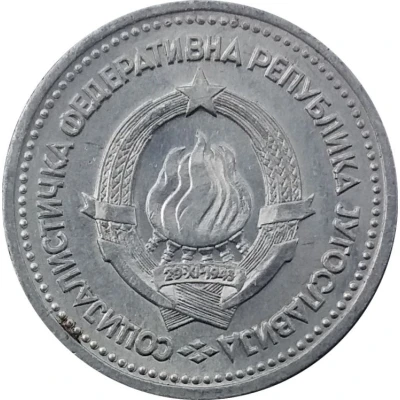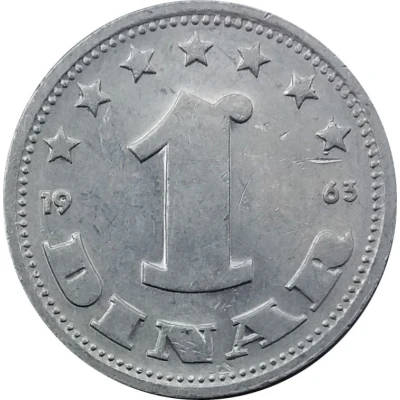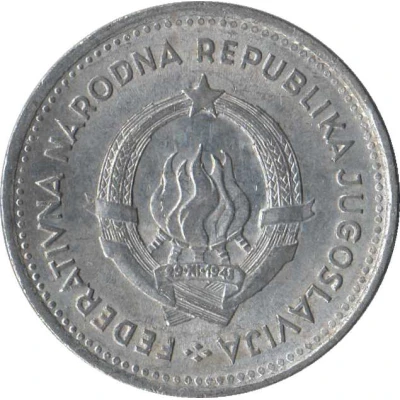


© gdch6ng
2 Dinara
1945 year| Zinc (97,5 % Zn) | 4.1 g | 22 mm |
| Issuer | Yugoslavia |
|---|---|
| Period | Democratic Federal Yugoslavia (1943-1945) |
| Type | Standard circulation coin |
| Year | 1945 |
| Value | 2 Dinars (2 Dinara) |
| Currency | Federation Dinar (1944-1965) |
| Composition | Zinc (97,5 % Zn) |
| Weight | 4.1 g |
| Diameter | 22 mm |
| Thickness | 1.5 mm |
| Shape | Round |
| Technique | Milled |
| Orientation | Coin alignment ↑↓ |
| Demonetized | 31 December 1956 |
| Updated | 2024-10-09 |
| Numista | N#4026 |
|---|---|
| Rarity index | 9% |
Reverse
15 stars, face value and date
Script: Latin
Lettering:
2
DINARA
1945
Edge
Reeded
Interesting fact
The 2 Dinara coin from Yugoslavia was designed by Đorđe Andrejević-Kun, a renowned Serbian sculptor and artist who was known for his work in various art forms, including sculpture, painting, and graphic design. He was also a prominent figure in the Yugoslav art scene during the mid-20th century. It's worth noting that the coin's design features a portrait of King Peter II of Yugoslavia on one side and the coat of arms of Yugoslavia on the other. The coat of arms features a shield with five torches, which symbolize the five republics of Yugoslavia: Bosnia and Herzegovina, Croatia, Macedonia, Montenegro, and Serbia. The shield is surrounded by a wreath of oak leaves, which symbolize strength and durability. Overall, the 2 Dinara coin from Yugoslavia is not only a piece of monetary history but also a reflection of the country's rich cultural heritage and artistic traditions.
Price
| Date | Mintage | VG | F | VF | XF | AU | UNC |
|---|---|---|---|---|---|---|---|
| 1945 | 70000000 | - | - | - | - | - | - |
Values in the table are based on evaluations by sales realized on Internet platforms. They serve as an indication only for 2 Dinara 1945 coin.



